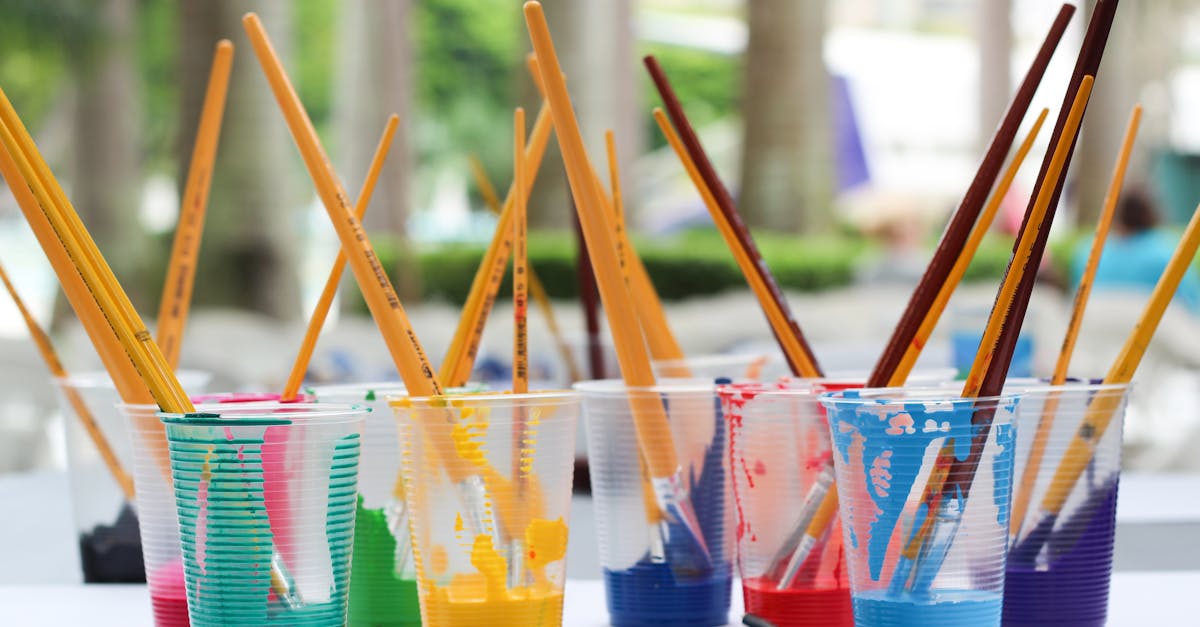Discovering the right paint for wood projects is essential for achieving lasting results in both residential and commercial spaces. This article delves into various paint options, highlighting the differences between water-based and oil-based paints. Key considerations include the best finish for different wooden surfaces, including furniture, cabinets, and trim, as well as the importance of using primer to prevent issues like tannin bleed-through. Techniques for achieving an elegant look with milk and chalk paints are also discussed, making this guide an invaluable resource for those looking to enhance their wood projects.
The Art of Color: Latest Trends in Residential and Commercial Painting
As the world of interior design evolves, homeowners and business owners alike are seeking fresh ways to breathe life into their spaces. The transformative power of paint can turn an ordinary room into a vibrant sanctuary, or a commercial space into a welcoming haven for customers. Today, it’s not just about choosing a color; it’s about understanding how different hues and techniques can enhance the functionality and mood of an environment.
In this article, we will explore the latest trends in painting that are redefining residential and commercial spaces. From striking color palettes that invite warmth and creativity, to innovative painting techniques that add depth and texture, the possibilities are endless. We’ll also share insights from past projects, highlighting how an expertly chosen paint can shift the perception of a space and create a lasting impression.

| Feature | Details |
|---|---|
| Type of Paint | Water-based and oil-based options available. |
| Durability | Oil-based paints generally offer superior resistance. |
| Drying Time | Water-based paints dry faster than oil-based paints. |
| Finish Options | Available in flat, eggshell, satin, semi-gloss, and high gloss. |
| Best for Furniture | Alkyd oil paint recommended for high-use wooden furniture. |
| Primer Necessity | Always apply a primer before painting for better results. |
| Environmental Impact | Latex paints are generally lower in VOCs. |
| Application Methods | Brush, roller, or spray methods are commonly used. |
Transforming Spaces: Latest Trends in Painting and Home Renovation
In today’s fast-paced world, a well-renovated home or commercial space can significantly enhance not only aesthetics but also functionality. Painting plays a central role in this transformation. As we explore the latest trends in painting and renovation, we’ll highlight the importance of color choices, techniques, and innovative materials that can breathe new life into any establishment.
The Power of Color in Renovation
The selection of colors is crucial in determining the mood and perception of a space. Recent studies show that color psychology can influence feelings and behaviors greatly, making the right palette essential for both residential and commercial areas.
- Warm Tones: Colors like oranges and yellows create a welcoming and cozy atmosphere, making them ideal for living rooms and cafés.
- Cool Tones: Shades of blue, green, and purple induce calmness and provide a sense of tranquility, perfect for bedrooms and healthcare facilities.
- Neutrals: Whites, grays, and taupes remain classic choices that provide a sophisticated backdrop while allowing for personal touches through decor.
For instance, a recent project involved revitalizing a café by implementing vibrant yellows and oranges on the walls, paired with earth-toned furnishings. The result was an inviting space that encouraged patrons to linger longer, significantly increasing customer satisfaction.
Techniques that Make a Difference
With modern technology and tools, several painting techniques can elevate your spaces beyond expectations. Here are a few popular methods to consider:
- Accent Walls: Using a bold or dark color to create an accent wall can add depth and dimension to a room, making it more visually appealing.
- Ombre Effects: A gradient of colors from dark to light can add a soft and unique touch to rooms, especially children’s spaces or creative studios.
- Textured Finishes: Products like sponges or combs can create various textures that give character to walls, making them stand out.
In a recent renovation of a bedroom, an ombre effect was applied, transitioning from dark teal at the base to light sky blue at the top. This technique not only brightened the space but also visually enhanced the ceiling height.
Innovative Painting Materials
The market is now brimming with innovative materials that provide ease, durability, and environmental benefits. Here are some materials worth considering for your next painting project:
- Eco-Friendly Paints: Low-VOC (Volatile Organic Compound) paints are not only less hazardous to health but also reduce environmental impact. These paints come in various finishes and colors, allowing for creativity without compromising safety. They offer great coverage and quick drying times.
- Chalk Paint: Ideal for furniture and decorative items, chalk paint offers a matte finish and can easily create a vintage look. It adheres well to most surfaces without a primer.
- Milk Paint: A natural paint that is perfect for achieving a rustic or distressed look, milk paint is biodegradable and child-safe, making it a fantastic choice for home renovations.
In one project, using low-VOC paints not only revitalized a home but also received positive feedback from the homeowner, who appreciated the safe indoor air quality. This choice reflected a growing trend among homeowners looking to invest in health-conscious renovations.
Practical Tips for Successful Renovation
When considering a renovation of your home or commercial space, several factors need careful deliberation. Below are some key tips to optimize the painting process:
Planning and Preparation
Success in any renovation project begins with meticulous planning. Here are a few steps to get started:
- Set a Budget: Ensure you have a clear understanding of the costs involved, from paint to labor.
- Create a Timeline: Determine how long the renovation will take and plan around other commitments.
- Research Trends: Look into current trends to find inspiration. Check design blogs or recent magazine features on home makeovers.
Choosing the Right Professionals
The quality of a renovation heavily relies on choosing the right professionals. Here are some pointers:
- Review Portfolios: Meet with contractors and view previous work to ensure their style aligns with your vision.
- Ask for Recommendations: Word-of-mouth referrals can be invaluable in finding reliable providers.
- Get Multiple Quotes: Comparing quotes not only ensures fair pricing but also helps in understanding the scope of work involved.
Maintenance and Care
Once the renovation is complete, the maintenance of newly painted surfaces is vital. Consider the following maintenance tips:
- Regular Cleaning: Use gentle cleaners to keep walls looking fresh without damaging the paint.
- Avoid Harsh Chemicals: Ensure that any cleaning solutions are safe for the paint type to avoid chipping or fading.
- Touch-Up Kits: Prepare a small kit of leftover paint for quick touch-ups to address any scuffs or damage immediately.
In a recent project, ongoing maintenance of a commercial space resulted in a better reputation due to its always fresh appearance, leading to increased business activities.
Transforming spaces through painting and renovation is both an art and a science. The recent trends showcase a multitude of new colors, techniques, and materials that are changing the landscape of home and commercial renovations. By understanding these elements, homeowners and business operators can create inviting and functional environments that reflect their personal or brand identities.
For those looking to explore these trends further and to consider a renovation, custom consultations and services are readily available to guide you through this invigorating process. Embrace the power of painting and transform your spaces today!
Explore eco-friendly solutions for your next project at TS Painting & Restoration.

Transform Your Space Today!
Are you ready to elevate the ambiance of your home or business? Our expert painting and remodeling services are tailored to meet your needs, ensuring a fresh and inviting atmosphere that impresses your guests or clients. Don’t wait any longer; let’s bring your vision to life!
Latest Trends and Tips in Painting and Space Renovation
Current Trends in Painting
- Eco-Friendly Paints: With increasing awareness about the environment, eco-friendly paints are gaining popularity. These paints typically have low VOC content, making them safer for both the planet and the indoor air quality.
- Bold Accent Walls: Creating a statement with a bold accent wall is a great way to refresh a space. Deep hues like navy blue or forest green can add depth and personality.
- Textured Finishes: Textures add a visual and tactile element to walls. Techniques like sponging, rag rolling, or using textured paint can create unique effects that enhance a room’s character.
- Monochromatic Schemes: Sticking to a single color in various shades can create a cohesive and sophisticated look, especially in residential and commercial spaces.
Practical Painting Tips
- Choosing the Right Paint: Selecting the right paint for wood is crucial. For indoor furniture, alkyd-based oil paints are recommended due to their durability, while latex is ideal for decorative pieces.
- Prep for Success: Always prime wood surfaces before painting to avoid tannin bleed-through. This creates an even foundation and enhances the paint’s adhesion.
- Sheen Selection Matters: The sheen of the paint can affect not only appearance but also durability. Semi-gloss or high-gloss finishes are excellent for high-traffic areas and surfaces prone to scuffing.
- Experiment with Color Combinations: When renovating spaces, consider mixing complementary colors for a refreshing look that can influence a room’s mood. Use tools available on various color-matching websites to visualize combinations.
- Consider Temperature and Humidity: Painting in conditions that are too hot or humid can affect drying times and finish quality. Aim for mild weather to achieve better results.
Innovative Materials on the Market
- Chalk and Milk Paints: Both offer a unique matte finish and are ideal for achieving a distressed look, popular in shabby chic styles.
- Self-Priming Paints: These types can save time and effort by removing the need for a primer, making them convenient for DIY projects.
- Spray Paint Options: Whether for furniture or outdoor projects, modern spray paints have been developed for ease of application and durability, providing smooth coverage on complex surfaces.
Frequently asked questions
Glossary of Key Terms in Painting and Space Renovation
- Water-based Paint
- A type of paint that uses water as a solvent, making it easier to clean and lower in volatile organic compounds (VOCs).
- Oil-based Paint
- Paint that utilizes oils as its main solvent, offering a durable finish but generally requiring mineral spirits for cleanup.
- Sheen
- The level of gloss in paint, typically categorized as flat, eggshell, satin, semi-gloss, or high gloss, affecting both appearance and durability.
- Primer
- A preparatory coating applied to surfaces before painting, essential for blocking stains and ensuring an even finish.
- Alkyd-based Paint
- A type of oil-based paint formulated with synthetic resins, known for its hardness and durability, especially suitable for high-traffic areas.
- Milk Paint
- A natural paint made from milk protein, offering a matte finish and ideal for achieving a rustic, distressed look.
- Chalk Paint
- A paint characterized by its soft matte finish, commonly used for achieving a vintage or shabby-chic aesthetic.
- VOC (Volatile Organic Compounds)
- Chemicals that evaporate into the air during the application and drying of paints, can contribute to air pollution and health issues.
- Decorative Trim
- Architectural elements such as moldings and casings that enhance the aesthetics of a space, often requiring specific types of paint for the best results.
- Finishing Techniques
- Methods used to apply the final coat of paint, which can include brushing, rolling, or spraying, each affecting the final texture and appearance of the surface.
Discovering the ultimate paint choice for wood projects is essential for achieving beautiful, durable finishes in your home or business. Understanding the differences between water-based and oil-based paints, as well as the various sheens available, empowers you to make informed decisions that enhance the lifespan of your wooden surfaces. By choosing the right type of paint, whether it’s for furniture, cabinets, or decorative trim, you can not only refresh your space but also ensure its resilience against wear and tear. Take these insights into your next project and watch as your spaces transform with the perfect choice in paint.
Choosing the Right Paint Type
When embarking on a wood project, selecting the appropriate type of paint is crucial for achieving a lasting finish. The two primary options are oil-based and water-based paints. Each has its benefits depending on the specific needs of your project.
- Oil-based Paint: Ideal for furniture and trim, alkyd-based oil paint provides a durable finish that hardens over time, making it resistant to wear and tear.
- Water-based Paint: Best suited for decorative pieces, latex paint offers quick drying times and lower VOC levels, making it an eco-friendly option.
Understanding Paint Finishes
The sheen of your paint can transform the look of your finished project. Understanding the various finishes will help you choose according to the surface’s function and exposure.
- Flat/Matt Finish: Provides a non-reflective surface ideal for concealing imperfections; great for low-traffic areas.
- Satin Finish: Offers a soft sheen that works well on furniture and trim, balancing washability with aesthetics.
- Semi-Gloss or High-Gloss Finish: Perfect for areas that require durability and easy cleaning, such as kitchen cabinets and high-traffic furniture.
Preparation is Key
Regardless of your paint choice, preparation is essential for a successful project. Always start by applying a stain-blocking primer. This prevents unwanted tannin bleed-through and ensures an even paint application, extending the longevity of your finish.
Transform Your Space Today!
Ready to breathe new life into your home or business? Our expert team at TS Painting & Restoration specializes in high-quality painting and renovation services that not only enhance your surroundings but also increase your property’s value. Reach out for a personalized consultation and discover the vibrant possibilities for your space!
Mariana Pons is the visionary behind some of the most stunning transformations at TS Painting & Restoration. With a strong background in design and renovation, she has empowered countless clients in Florida to revitalize their homes and businesses with her expert painting solutions. Born in the Dominican Republic and raised in New York, Mariana seamlessly blends urban sophistication with tropical charm in her approach.
Her philosophy revolves around transformative energy. Mariana thrives on taking outdated or neglected spaces and turning them into vibrant, inviting environments. Her project portfolio is filled with compelling before-and-after stories that highlight her skill in overcoming challenges and delivering exceptional results, making her a trusted partner for clients seeking to enhance their spaces.
Outside of work, Mariana enjoys exploring new cultures through travel, indulging in culinary experiences, and staying ahead of the latest interior design trends. She believes that every project is not just a task, but an opportunity to create something extraordinary that reflects the personality and desires of her clients.
At TS Painting & Restoration, Mariana is committed to using high-quality materials and innovative techniques to ensure each painting project exceeds expectations. Her passion for color and design enables her to guide clients in selecting the perfect palettes that breathe life into their spaces, making every home and business a true reflection of individuality.


